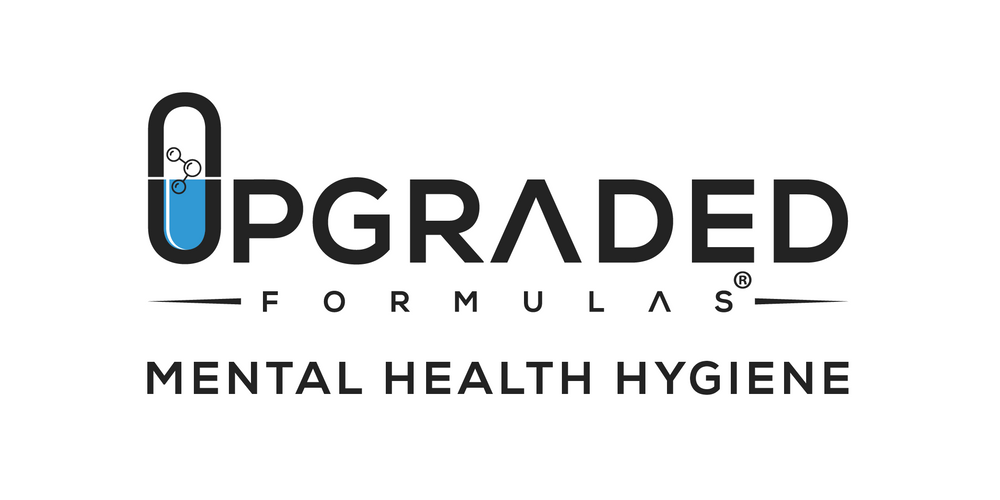How Do You Get Mercury Toxicity?
Introduction
An alarming increase in cases of mercury toxicity has emerged as a pressing health concern, presenting a complex puzzle as experts grapple to understand the origins and mechanisms behind this growing epidemic.
Understanding Mercury Toxicity
Mercury, a highly volatile heavy metal, poses significant health risks due to its potent neurotoxic properties, which means it can damage the nervous system. Here's an in-depth look at the adverse effects:
Neurological Impact
Mercury disrupts the normal functions of the nervous system, leading to a range of symptoms from tremors and memory loss to difficulty concentrating and mood swings. In extreme cases, the consequences of mercury poisoning can escalate to paralysis, coma, or even death.
Developmental Consequences
Regarding mercury exposure during pregnancy, the stakes are exceptionally high. The developing fetus is at risk of impaired brain development, which may translate into cognitive and developmental delays. Children exposed to methylmercury in the womb might struggle with learning disabilities, poor motor skills, and behavioral issues as they grow, particularly in populations that consume significantly more fish than the general population, potentially leading to permanent brain damage. Understanding the developmental consequences of methylmercury exposure on unborn babies, including the potential effects on blood mercury levels and breast milk, is crucial in preventing and addressing mercury toxicity.
Cardiovascular Concerns
Research indicates a potential link between mercury exposure and an elevated risk of cardiovascular conditions, including heart attacks and hypertension. Mercury's harmful effects on blood vessels and its ability to disrupt heart rhythm underline its cardiovascular dangers.
Kidney Health
Mercury also has a detrimental effect on kidney function, compromising the kidneys' critical role in filtering waste from the blood. Prolonged exposure to elevated mercury levels can cause irreversible kidney damage and impair its functionality.
Respiratory Risks
Inhaling mercury vapors—particularly common in specific industrial environments—can lead to a host of respiratory issues: coughing, feelings of chest tightness, and breathlessness. Chronic exposure may inflict lasting damage on lung tissue, leading to severe respiratory diseases.
Broader Health Implications
The reach of mercury's impact extends to numerous health conditions, including but not limited to eating disorders, depression, anxiety, autism, Parkinson’s and Alzheimer’s diseases, thyroid dysfunctions, tinnitus, heart disease, kidney failure, and even cancer.
Understanding the comprehensive health risks of mercury exposure is crucial for preventive measures and future generations' welfare.
Sources of Mercury Exposure
The pertinent question we face now is: How and where do we encounter mercury in our regular lives to the degree that it leads to toxicity? Is it truly embedded so deeply in our daily routines?
Let's start with medications. Mercury is a hidden component in several prescription and over-the-counter medicines almost everyone uses. Mercury can be found in immunomodulators, antihistamines, antifungals, and antibacterials, as well as in dental fillings and thermometers, as elemental mercury. Another medical source of mercury lies in vaccines, some of which contain thimerosal, a preservative that includes mercury compounds. Mercury exposure can also occur through skin contact with mercury-containing products, such as handling or using them without proper precautions. This includes consuming fish contaminated with methylmercury, a common form of organic mercury, which the World Health Organization considers one of the top ten chemicals of primary public health concern. However, exposure to toxic substances like mercury, even in small amounts, can lead to serious health problems. Handling mercury-containing products with proper precautions, such as wearing gloves and ensuring adequate ventilation at room temperature, is crucial. It is essential to prioritize human health and phase out non-essential mercury-containing products while implementing safe handling, use, and disposal of remaining products.
Mercury also lurks in dental materials, especially amalgam fillings, made from a mercury mixture. Dental fillings are a common source of mercury exposure, as they are used in dental amalgam, also known as "silver filling." This material comprises approximately 40-50% mercury, 25% silver, and 25-35% copper, zinc, and tin blend. Certain studies firmly advise against amalgam for dental restorations, recommending replacement with less toxic alternatives. They also suggest avoiding amalgam restorations in children and women of childbearing age due to mercury's potential to interfere with brain development. However, small in scale, mercury residue from amalgams can accumulate over time and potentially cause damage to critical organs like the brain if not properly expelled from the body. It is essential to reduce exposure to mercury from dental fillings, as even a tiny amount of mercury can harm the body.
Mercury exposure can also come from dietary sources, specifically fish consumption. Consuming large amounts of seafood, including bigger fish and shellfish, can lead to mercury poisoning. Unfortunately, pollution, including heavy metals, taints our oceans. Larger fish tend to harbor higher levels of mercury due to their size and fat content, making it the most common way people in the United States are exposed to mercury through the food chain. Tuna and salmon, some of the most commonly consumed fish, often have the highest contamination levels of high levels of mercury. Other seafood like clams, mussels, oysters, shrimp, lobster, and king mackerel can harbor not just mercury but other heavy metals like cadmium, arsenic, and lead as well, making it essential to monitor and limit your intake of seafood to avoid consuming too much seafood and risk mercury poisoning from a high level of mercury, precisely the type of mercury known as methylmercury.
Lastly, industry and the environment serve as hidden carriers of mercury. Occupations in mining, electronics, paper manufacturing, specific agricultural practices involving certain herbicides infused with metallic mercury, and even fabric softeners can expose us to this harmful element. Seemingly benign cleaning products like Ajax, Lysol, Comet, Dove Soap, and various cosmetics may contain metallic mercury and lead to symptoms such as a metallic taste in the mouth. This can add to our daily exposure to sources such as gold mining, illegal drug administration, and improper disposal of products containing mercury. Additionally, long-term exposure to organic mercury can cause symptoms of inorganic mercury poisoning, such as neurological and cognitive issues. Understanding the sources of mercury exposure is crucial in preventing organic mercury poisoning and its symptoms. It is essential to contact your local or state health department or environmental protection agency to properly clean up any spilled mercury to prevent symptoms of inorganic mercury poisoning.
Prevention and Protection Strategies
Is there a strategy for safeguarding ourselves against mercury other than strictly avoiding exposure sources?
Indeed, one practical approach is to ensure that you have sufficient certain protective minerals in your body. These include zinc, chromium, selenium, and manganese, which can act as antagonists to mercury, potentially mitigating its harmful effects.
This protection hinges on a biological concept known as ionic mimicry. When the body lacks essential minerals or isn't available in necessary quantities, it sometimes substitutes these with other available elements—including metals—in enzymatic processes and proteins. This substitution is not solely a consequence of excessive exposure to metal-rich environments. Still, the body also employs a survival mechanism to maintain function, using what's available, even if it's not ideal.
Metals structurally similar in molecular weight or functional characteristics can be used as temporary stand-ins for the missing minerals. To combat this, maintaining adequate and consistent levels of essential minerals can help displace unwanted metals from bodily processes—essentially "crowding out" mercury and other harmful substances.
Conclusion
In conclusion, the rising occurrences of mercury toxicity pose a significant health issue with far-reaching implications. Mercury's wide-ranging adverse impacts, from cognitive impairment to internal organ damage, underline the urgency of understanding and addressing this toxic threat. Tracing the sources of mercury exposure, we find it ingrained in various aspects of daily life, from medical and dental procedures to our dietary choices and industries. Proactive strategies around maintaining adequate levels of essential minerals may offer some protection. Addressing mercury toxicity is not just a battle against a heavy metal - it's a battle for our health and the well-being of future generations. By arming ourselves with knowledge and making informed choices, we can ward off mercury's harmful effects and foster healthier, safer lives.
To determine whether you're experiencing a deficiency in any of these essential minerals, consider taking a Hair Tissue Mineral Analysis (HTMA) with us. It's a simple, non-invasive test that can provide information about your body's mineral levels. Click here to schedule your HTMA.
Additionally, if you want to replenish your mineral reserves, we've got you covered. Explore our collection of high-quality supplements available directly from our store:
Each product is meticulously sourced and designed to support your well-being. Take the first step towards optimal mineral balance today!
Barbara Madimenos
Hair Tissue Mineral Analysis Practitioner
Functional Diagnostic Nutrition Practitioner
Integrative Nutrition Coach


